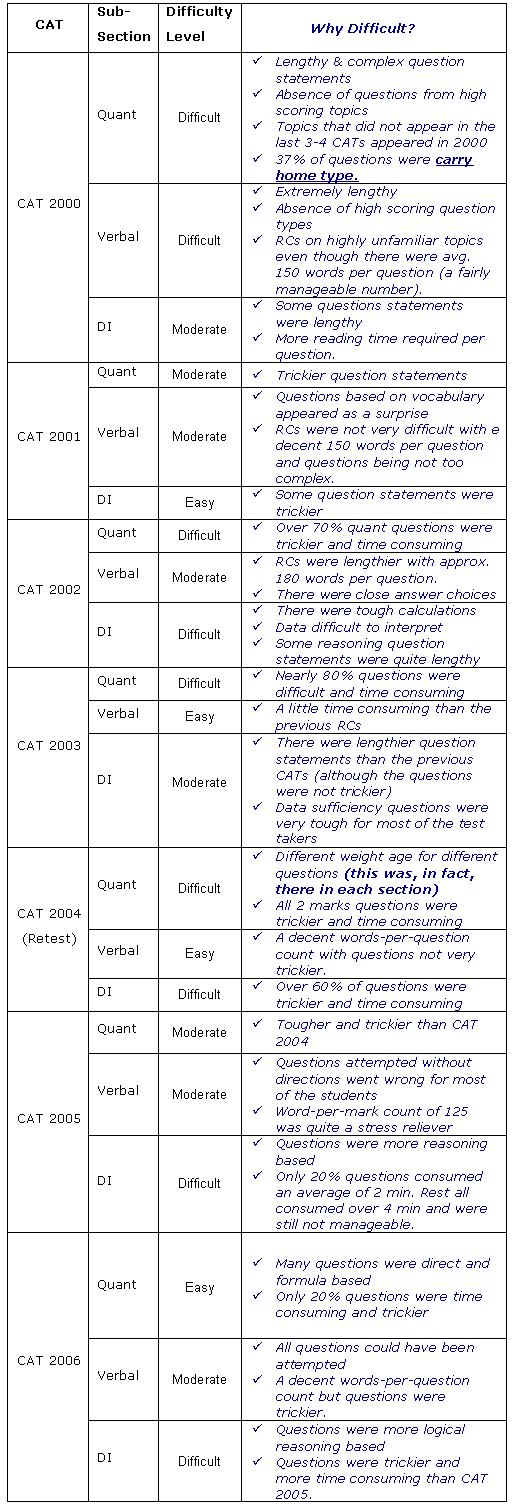|
|
| Help | |
| You are here: Rediff Home » India » Get Ahead » Careers » Cracking CAT |
|
| |||||||||||||||||||||||
|
| |||||||||||||||||||||||
Part I: Prepare for the 'Surprise' factor
Everybody knows that CAT is one of the most (if not the most) un-predictable exams held in India and abroad.
It has been observed that even the testing software used by education testing services to conduct the Graduate Record Examination (GRE) has a similar set of questions in one month. That means the GRE, despite being an international exam, is relatively easier to predict than CAT.
Therefore, knowing more about examinations like CAT helps develop flexible time management strategies to eliminate the effects of a changed CAT pattern.
The examination experts at TCY have done a critical analysis of the previous CATs by measuring the three most crucial factors that remain highly tricky in all CATs. These are:
- Number of questions and their break up into Quant, Verbal and DI sections
- Total time and its break up into sub-sections
- Difficulty level of the questions
It has been observed that whatever CAT paper we take for analysis, the interplay of these three factors has consistently been responsible for the 'surprise' factor.
Let us try to identify what the indicators of the difficulty level of any section of CAT were in the past. We recognise however the fact that the level of difficulty is a quite a subjective experience. A section that is difficult for one candidate may be the only score-getter for the other. Still, a sprinter must know what the real obstacles in his sprint are so that he may adjust his pace and concentration in order to jump successfully over them.
Hence, a comprehensive knowledge of different combinations of the three factors (which eventually boil down to TDS -- time, difficulty and speed) will help us know the approximate dimensions of our obstacles in CAT 2007.

Looking at all the ways the experts in TCY have tried to define "difficulty" in a CAT, we find that most times it is the interplay of total time available, number of questions and length and complexity of their statement that decide whether a particular set of questions were easy, moderate or difficult. The main purpose of making you familiar with these "difficulty types" is for you to make sure that you have taken all the similar mock CATs before sitting for CAT 2007.
Atul Prashar is an examination expert with Top Careers & You. He can be contacted at tcychd@tcyonline.com.
To gain more from the recommendations of TCY experts on changing patterns of CAT, visit http://www.tcyonline.comand attend a Web-Seminar in a virtual classroom atmosphere.
Part I: Prepare for the 'Surprise' factor
|
|
| © 2007 Rediff.com India Limited. All Rights Reserved. Disclaimer | Feedback |